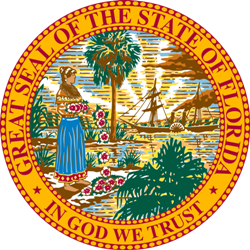Florida Eyes Unusual Mark in 2022 Gubernatorial Race
Just three states have elected governors with a plurality in four or more straight elections over the last 100 years

DeSantis won 49.6 percent in 2018 joining Connecticut Democrat Ned Lamont (49.4 percent), Kansas Democrat Laura Kelly (48.0 percent), Nevada Democrat Steve Sisolak (49.4 percent), and Wisconsin Democrat Tony Evers (49.5 percent). Kentucky Democrat Andy Beshear subsequently won 49.2 percent in 2019.
Florida has the longest active streak in the nation with each of its last three governors elected with a plurality. DeSantis’ win came on the heels of plurality wins by Republican Rick Scott in 2010 (48.9 percent) and 2014 (48.1 percent).
With an expected tight race again in 2022 – and multiple independent candidates already campaigning – the Sunshine State could see its fourth straight plurality affair next November.
That electoral outcome has only occurred three times during the last 100+ years:
- Alaska (Six in a row, 1974-1994): Republican Jay Hammond in 1974 (47.7 percent), Hammond in 1978 (39.1 percent), Democrat Bill Sheffield in 1982 (46.1 percent), Democrat Steve Cowper in 1986 (47.3 percent), Alaska Independence Party nominee Wally Hickel in 1990 (38.9 percent), and Democrat Tony Knowles in 1994 (41.1 percent).
- Minnesota (Four, 1998-2010): Reform Party nominee Jesse Ventura in 1998 (37.0 percent), Republican Tim Pawlenty in 2002 (44.4 percent), Pawlenty in 2006 (46.7 percent), and DFLer Mark Dayton in 2010 (43.6 percent)
- Maine (Four, 2002-2014): Democrat John Baldacci in 2002 (47.2 percent), Baldacci in 2006 (38.1 percent), Republican Paul LePage in 2010 (38.1 percent), and LePage in 2014 (48.2 percent)
During the first two decades of the 20th Century, similar streaks occurred in five other states:
- Idaho (Five in a row, 1908-1916): Republican James Brady in 1908 (49.6 percent), Democrat James Hawley in 1910 (47.4 percent), Republican John Haines in 1912 (33.2 percent), Democrat Moses Alexander in 1914 (44.1 percent), and Alexander in 1916 (47.5 percent)
- Massachusetts (Five, 1911-1915): Democrat Eugene Foss in 1911 (48.8 percent), Foss in 1912 (40.6 percent), Democrat David Walsh in 1913 (39.8 percent), Walsh in 1914 (45.9 percent), and Republican Samuel McCall in 1915 (47.0 percent)
- California (Four, 1902-1914): Republican George Pardee in 1902 (48.1 percent), Republican James Gillett in 1906 (40.4 percent), Republican Hiram Johnson in 1910 (45.9 percent), Johnson – as a Progressive – in 1914 (49.7 percent)
- Oregon (Four, 1902-1914): Democrat George Chamberlain in 1902 (46.2 percent), Chamberlain in 1906 (47.6 percent), Democrat Oswald West in 1910 (46.6 percent), and Republican James Withycombe in 1914 (48.8 percent)
- New York (Four, 1908-1914): Republican Charles Evans Hughes in 1908 (49.1 percent), Democrat John Dix in 1910 (48.0 percent), Democrat William Sulzer in 1912 (41.5 percent), and Republican Charles Whitman in 1914 (47.7 percent)
Since 1900, eight states have elected governors with a plurality of the vote at least one-quarter of the time: Alaska (50.0 percent, eight of 16), Connecticut (34.9 percent, 15 of 43), New York (32.5 percent, 13 of 40), California (29.0 percent, nine of 31), Minnesota (28.3 percent, 13 of 46), Massachusetts (28.1 percent, 16 of 57), Oregon (27.3 percent, nine of 33), and Kansas (26.5 percent, 13 of 49).
Kansas has elected plurality winners during its last two gubernatorial contests – the only other state to currently have done so in more than one straight election.
Overall, 14.4 percent of gubernatorial elections since 1900 have ended with a plurality winner (278 of 1,934).
Follow Smart Politics on Twitter.
